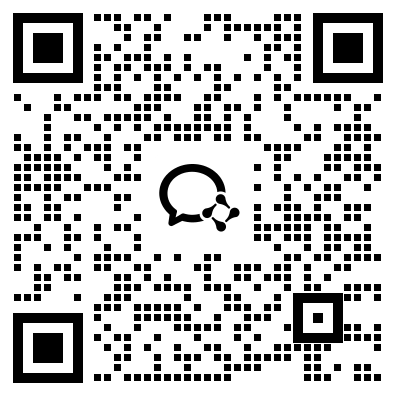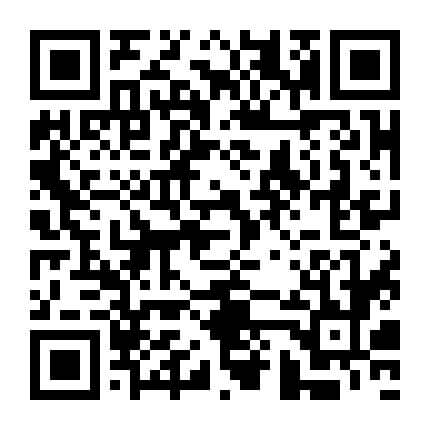考研201英语(一)在线题库每日一练(二百二十二)
摘要:以下是希赛网给大家分享考研201英语(一)在线题库每日一练,希望通过刷题可以帮助大家巩固重要知识点,对知识点查漏补缺,祝愿大家能顺利通过考试!
本文提供考研201英语(一)在线题库每日一练,以下为具体内容
1、In 1924 America's National Research Council sent two engineers to supervise a series of industrial experiments at a large telephone-parts factory called the Hawthorne Plant near Chicago. It hoped they would learn how stop-floor lighting (1)workers' productivity. Instead, the studies ended (2) giving their name to the "Hawthorne effect", the extremely influential idea that the very (3) to being experimented upon changed subjects' behavior. The idea arose because of the behavior of the women in the (4) Hawthorne plant. According to (5) of the experiments, their hourly output rose when lighting was increased, but also when it was dimmed. It did not (6) what was done in the experiment; (7)something was changed, productivity rose. A(n) (8) that they were being experimented upon seemed to be (9) to alter workers' behavior (10) itself. After several decades, the same data were (11) to econometric the analysis. Hawthorne experiments has another surprise in store (12) the descriptions on record, no systematic (13) was found that levels of productivity were related to changes in lighting. It turns out that peculiar way of conducting the experiments may have led to (14) interpretation of what happened. (15), lighting was always changed on a Sunday. When work started again on Monday, output (16) rose compared with the previous Saturday and (17) to rise for the next couple of days. (18), a comparison with data for weeks when there was no experimentation showed that output always went up on Monday, workers (19) to be diligent for the first few days of the week in any case, before (20) a plateau and then slackening off. This suggests that the alleged "Hawthorne effect" is hard to pin down.
问题1
A、affected
B、achieved
C、extracted
D、restored
问题2
A、at
B、up
C、with
D、off
问题3
A、truth
B、sight
C、act
D、proof
问题4
A、controversial
B、perplexing
C、mischievous
D、ambiguous
问题5
A、requirements
B、explanations
C、accounts
D、assessments
问题6
A、conclude
B、matter
C、indicate
D、work
问题7
A、as far as
B、for fear that
C、in case that
D、so long as
问题8
A、awareness
B、expectation
C、sentiment
D、illusion
问题9
A、suitable
B、excessive
C、enough
D、abundant
问题10
A、about
B、for
C、on
D、by
问题11
A、compared
B、shown
C、subjected
D、conveyed
问题12
A、contrary to
B、consistent with
C、parallel with
D、peculiar to
问题13
A、evidence
B、guidance
C、implication
D、source
问题14
A、disputable
B、enlightening
C、reliable
D、misleading
问题15
A、In contrast
B、For example
C、In consequence
D、As usual
问题16
A、duly
B、accidentally
C、unpredictably
D、suddenly
问题17
A、failed
B、ceased
C、started
D、continued
问题18
A、Therefore
B、Furthermore
C、However
D、Meanwhile
问题19
A、attempted
B、tended
C、chose
D、intended
问题20
A、breaking
B、climbing
C、surpassing
D、hitting
2、Over the past decade, thousands of patents have been granted for what are called business methods. Amazon.com received one for its “one-click” online payment system. Merrill Lynch got legal protection for an asset allocation strategy. One inventor patented a technique for lifting a box.Now the nation's top patent court appears completely ready to scale back on business-method patents, which have been controversial ever since they were first authorized 10 years ago. In a move that has intellectual-property lawyers abuzz, the U.S. Court of Appeals for the Federal Circuit said it would use a particular case to conduct a broad review of business-method patents. In re Bilski, as the case is known , is “a very big deal”, says Dennis D. Crouch of the University of Missouri School of Law. It “has the potential to eliminate an entire class of patents.”Curbs on business-method claims would be a dramatic about-face, because it was the Federal Circuit itself that introduced such patents with its 1998 decision in the so-called State Street Bank case, approving a patent on a way of pooling mutual-fund assets. That ruling produced an explosion in business-method patent filings, initially by emerging Internet companies trying to stake out exclusive rights to specific types of online transactions. Later, more established companies raced to add such patents to their files, if only as a defensive move against rivals that might beat them to the punch. In 2005, IBM noted in a court filing that it had been issued more than 300 business-method patents, despite the fact that it questioned the legal basis for granting them. Similarly, some Wall Street investment firms armed themselves with patents for financial products, even as they took positions in court cases opposing the practice.The Bilski case involves a claimed patent on a method for hedging risk in the energy market. The Federal Circuit issued an unusual order stating that the case would be heard by all 12 of the court's judges, rather than a typical panel of three, and that one issue it wants to evaluate is whether it should “reconsider” its State Street Bank ruling.The Federal Circuit's action comes in the wake of a series of recent decisions by the Supreme Court that has narrowed the scope of protections for patent holders. Last April, for example, the justices signaled that too many patents were being upheld for “inventions” that are obvious. The judges on the Federal Circuit are “reacting to the anti-patent trend at the Supreme Court”, says Harold C. Wegner, a patent attorney and professor at George Washington University Law School.1.Business-method patents have recently aroused concern because of( ). 2.Which of the following is true of the Bilski case?3.The word “about-face” (Line 1, Para 3) most probably means ( ). 4.We learn from the last two paragraphs that business-method patents ( ). 5.Which of the following would be the subject of the text?
问题1
A、their limited value to businesses
B、their connection with asset allocation
C、the possible restriction on their granting
D、the controversy over their authorization
问题2
A、Its ruling complies with the court decisions.
B、It involves a very big business transaction.
C、It has been dismissed by the Federal Circuit.
D、It may change the legal practices in the U.S.
问题3
A、loss of good will
B、increase of hostility
C、change of attitude
D、enhancement of dignity
问题4
A、are immune to legal challenges
B、are often unnecessarily issued
C、lower the esteem for patent holders
D、increase the incidence of risks
问题5
A、A looming threat to business-method patents.
B、Protection for business-method patent holders.
C、A legal case regarding business-method patents.
D、A prevailing trend against business-method patents.
3、In his book The Tipping Point, Malcolm Gladwell argues that “social epidemics” are driven in large part by the actions of a tiny minority of special individuals, often called influentials, who are unusually informed, persuasive, or well connected. The idea is intuitively compelling, but it doesn't explain how ideas actually spread.The supposed importance of influentials derives from a plausible-sounding but largely untested theory called the “two-step flow of communication”: Information flows from the media to the influentials and from them to everyone else. Marketers have embraced the two-step flow because it suggests that if they can just find and influence the influentials, those selected people will do most of the work for them. The theory also seems to explain the sudden and unexpected popularity of certain looks, brands, or neighborhoods. In many such cases, a cursory search for causes finds that some small group of people was wearing, promoting, or developing whatever it is before anyone else paid attention. Anecdotal evidence of this kind fits nicely with the idea that only certain special people can drive trends. In their recent work, however, some researchers have come up with the finding that influentials have far less impact on social epidemics than is generally supposed. In fact, they don't seem to be required at all.The researchers' argument stems from a simple observation about social influence: with the exception of a few celebrities like Oprah Winfrey—whose outsize presence is primarily a function of media, not interpersonal, influence—even the most influential members of a population simply don't interact with that many others. Yet it is precisely these non-celebrity influentials who, according to the two-step-flow theory, are supposed to drive social epidemics, by influencing their friends and colleagues directly. For a social epidemic to occur, however, each person so affected, must then influence his or her own acquaintances, who must in turn influence theirs, and so on; and just how many others pay attention to each of these people has little to do with the initial influential. If people in the network just two degrees removed from the initial influential prove resistant, for example, the cascade of change won't propagate very far or affect many people.Building on the basic truth about interpersonal influence, the researchers studied the dynamics of social influence by conducting thousands of computer simulations of populations, manipulating a number of variables relating to people's ability to influence others and their tendency to be influenced. They found that the principal requirement for what is called “global cascades” — the widespread propagation of influence through networks—is the presence not of a few influentials but, rather, of a critical mass of easily influenced people. 1.By citing the book The Tipping Point, the author intends to( ).2.The author suggests that the "two-step-flow theory" ( ). 3.What the researchers have observed recently shows that ( ). 4.The underlined phrase “these people” in paragraph 4 refers to the ones who ( ). 5.What is the essential element in the dynamics of social influence?
问题1
A、analyze the consequences of social epidemics
B、discuss influentials' function in spreading ideas
C、exemplify people's intuitive response to social epidemics
D、describe the essential characteristics of influentials
问题2
A、serves as a solution to marketing problems
B、has helped explain certain prevalent trends
C、has won support from influentials
D、requires solid evidence for its validity
问题3
A、the power of influence goes with social interactions
B、interpersonal links can be enhanced through the media
C、influentials have more channels to reach the public
D、most celebrities enjoy wide media attention
问题4
A、stay outside the network of social influence
B、have little contact with the source of influence
C、are influenced and then influence others
D、are influenced by the initial influential
问题5
A、The eagerness to be accepted.
B、The impulse to influence others.
C、The readiness to be influenced.
D、The inclination to rely on others.
4、Bankers have been blaming themselves for their troubles in public. Behind the scenes, they have been taking aim at someone else: the accounting standard-setters. Their rules, moan the banks, have forced them to report enormous losses, and it's just not fair. These rules say they must value some assets at the price a third party would pay, not the price managers and regulators would like them to fetch.Unfortunately, banks' lobbying now seems to be working. The details may be unknowable, but the independence of standard-setters, essential to the proper functioning of capital markets, is being compromised. And, unless banks carry toxic assets at prices that attract buyers, reviving the banking system will be difficult.After a bruising encounter with Congress, America's Financial Accounting Standards Board (FASB) rushed through rule changes. These gave banks more freedom to use models to value illiquid assets and more flexibility in recognizing losses on long-term assets in their income statements. Bob Herz, the FASB's chairman, cried out against those who “question our motives.” Yet bank shares rose and the changes enhance what one lobbying group politely calls “the use of judgment by management.”European ministers instantly demanded that the International Accounting Standards Board (IASB) do likewise. The IASB says it does not want to act without overall planning, but the pressure to fold when it completes its reconstruction of rules later this year is strong. Charlie McCreevy, a European commissioner, warned the IASB that it did “not live in a political vacuum” but “in the real world” and that Europe could yet develop different rules.It was banks that were on the wrong planet, with accounts that vastly overvalued assets. Today they argue that market prices overstate losses, because they largely reflect the temporary illiquidity of markets, not the likely extent of bad debts. The truth will not be known for years. But banks' shares trade below their book value, suggesting that investors are skeptical. And dead markets partly reflect the paralysis of banks which will not sell assets for fear of booking losses, yet are reluctant to buy all those supposed bargains.To get the system working again, losses must be recognized and dealt with. America's new plan to buy up toxic assets will not work unless banks mark assets to levels which buyers find attractive. Successful markets require independent and even combative standard-setters. The FASB and IASB have been exactly that, cleaning up rules on stock options and pensions, for example, against hostility from special interests. But by giving in to critics now they are inviting pressure to make more concessions.1.Bankers complained that they were forced to( ).2.According to the author, the rule changes of the FASB may result in ( ). 3.According to Paragraph 4, McCreevy objects to the IASB's attempt to ( ). 4.The author thinks the banks were “on the wrong planet” in that they ( ). 5.The author's attitude towards standard-setters is one of( ).
问题1
A、follow unfavorable asset evaluation rules
B、collect payments from third parties
C、cooperate with the price managers
D、reevaluate some of their assets
问题2
A、the diminishing role of management
B、the revival of the banking system
C、the banks' long-term asset losses
D、the weakening of its independence
问题3
A、keep away from political influences
B、evade the pressure from their peers
C、act on their own in rule-setting
D、take gradual measures in reform
问题4
A、misinterpreted market price indicators
B、exaggerated the real value of their assets
C、neglected the likely existence of bad debts
D、denied booking losses in their sale of assets
问题5
A、satisfaction
B、skepticism
C、objectiveness
D、sympathy
5、A deal is a deal-except, apparently, when Entergy is involved. The company, a major energy supplier in New England, provoked justified outrage in Vermont last week when it announced it was reneging on a longstanding commitment to abide by the strict nuclear regulations. Instead, the company has done precisely what it had long promised it would not challenge the constitutionality of Vermont's rules in the federal court, as part of a desperate effort to keep its Vermont Yankee nuclear power plant running. It's a stunning move. The conflict has been surfacing since 2002, when the corporation bought Vermont's only nuclear power plant, an aging reactor in Vernon. As a condition of receiving state approval for the sale, the company agreed to seek permission from state regulators to operate past 2012. In 2006, the state went a step further, requiring that any extension of the plant's license be subject to Vermont legislature's approval. Then, too, the company went along. Either Entergy never really intended to live by those commitments, or it simply didn't foresee what would happen next. A string of accidents, including the partial collapse of a cooling tower in 2007 and the discovery of an underground pipe system leakage, raised serious questions about both Vermont Yankee's safety and Entergy's management—especially after the company made misleading statements about the pipe. Enraged by Entergy's behavior, the Vermont Senate voted 26 to 4 last year against allowing an extension. Now the company is suddenly claiming that the 2002 agreement is invalid because of the 2006 legislation, and that only the federal government has regulatory power over nuclear issues. The legal issues in the case are obscure: whereas the Supreme Court has ruled that states do have some regulatory authority over nuclear power, legal scholars say that Vermont case will offer a precedent-setting test of how far those powers extend. Certainly, there are valid concerns about the patchwork regulations that could result if every state sets its own rules. But had Entergy kept its word, that debate would be beside the point. The company seems to have concluded that its reputation in Vermont is already so damaged that it has noting left to lose by going to war with the state. But there should be consequences. Permission to run a nuclear plant is a public trust. Entergy runs 11 other reactors in the United States, including Pilgrim Nuclear station in Plymouth. Pledging to run Pilgrim safely, the company has applied for federal permission to keep it open for another 20 years. But as the Nuclear Regulatory Commission (NRC) reviews the company's application, it should keep it mind what promises from Entergy are worth. 1.The phrase “reneging on”(Line 2. para.1) is closest in meaning to( ).2.By entering into the 2002 agreement, Entergy intended to ( ). 3.According to Paragraph 4, Entergy seems to have problems with it ( ). 4.In the author's view, the Vermont case will test ( ). 5.It can be inferred from the last paragraph that( ).
问题1
A、condemning
B、reaffirming
C、dishonoring
D、securing
问题2
A、obtain protection from Vermont regulators
B、seek favor from the federal legislature
C、acquire an extension of its business license
D、get permission to purchase a power plant
问题3
A、managerial practices
B、technical innovativeness
C、financial goals
D、business vision
问题4
A、Entergy's capacity to fulfill all its promises
B、the mature of states' patchwork regulations
C、the federal authority over nuclear issues
D、the limits of states' power over nuclear issues
问题5
A、Entergy's business elsewhere might be affected
B、the authority of the NRC will be defied
C、Entergy will withdraw its Plymouth application
D、Vermont's reputation might be damaged
点击查看【完整】试卷>>延伸阅读
- 历年考研国家分数线汇总(更新至2025年)
- 2025考研国家分数线正式发布
- 2025全国各省考研初试成绩公布时间汇总(更新中)
- 2025年考研成绩公布时间及查询流程
- 2025年全国硕士研究生招生考试(初试)温馨提示汇总
- 2025年全国硕士研究生招生考试考场规则

考研微信公众号

考研备考资料免费领取
去领取
- 1
- 1
- 7
 专注在线职业教育24年
专注在线职业教育24年









 扫描二维码
扫描二维码
 扫描二维码
扫描二维码








